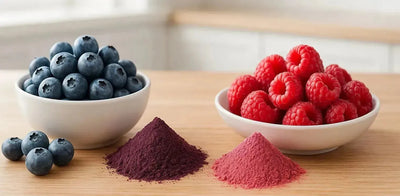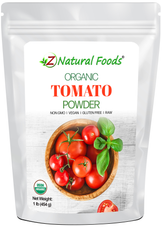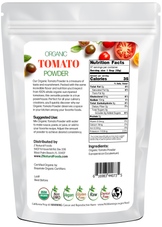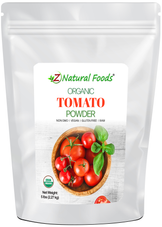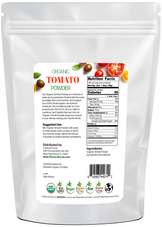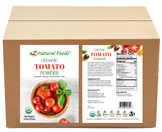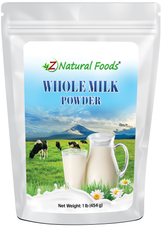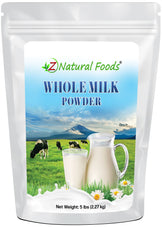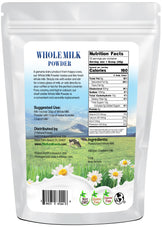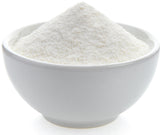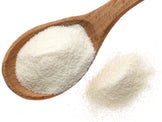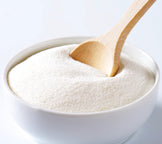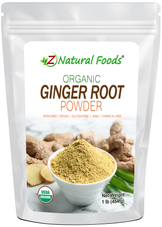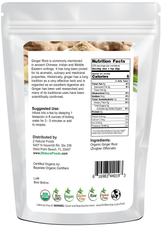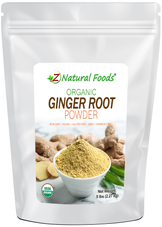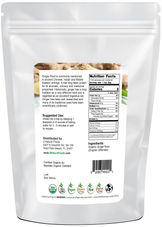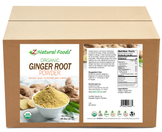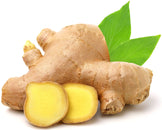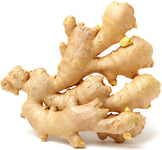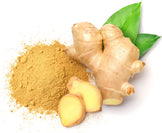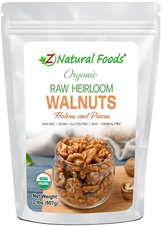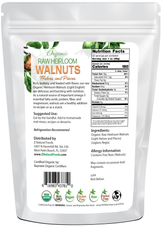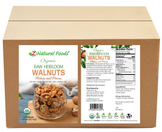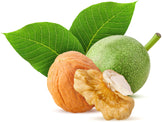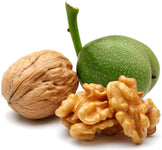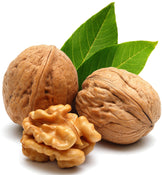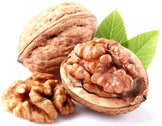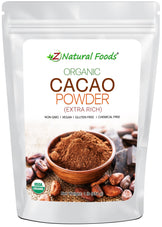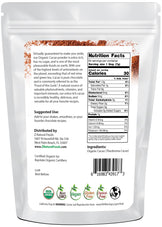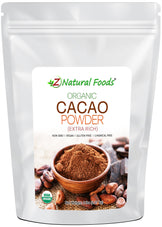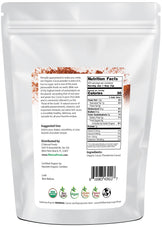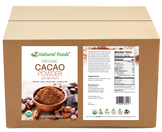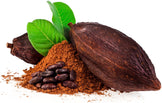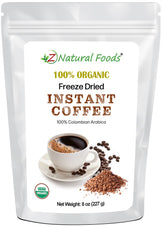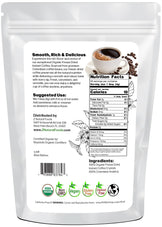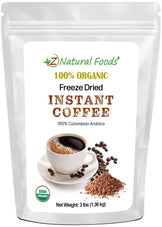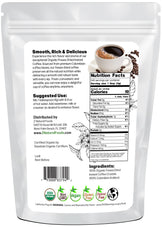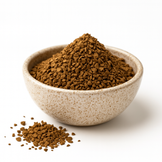Description
Description
The world-famous Mediterranean Diet is perhaps one of the most well-known and studied lifestyles for supporting a healthy inflammation response and aging process.
As we get started, to gain more information about the Mediterranean Diet (Lifestyle), go here for an excellent article:
Specific areas worldwide, known as “Blue Zones,” contain populations of people who live well beyond the average lifespan.
These blue zones have in common that their success is based on eating and lifestyle habits.
The two blue zones found in Italy and Greece are known to have the most success, and both strictly adhere to the basic principles of the Mediterranean lifestyle. This lifestyle has several variabilities based on geographic location.
For example, areas closer to the ocean eat more seafood, whereas those more inland eat more meat. However, there is a list of foods that all versions of the Mediterranean lifestyle consider essential for daily consumption. These include red wine, olive oil, coffee, and locally-grown produce, specifically tomatoes. However, it is no secret that consistency and compliance with all aspects of the MED lifestyle are most important for producing optimal results.
A study titled Adherence to the Mediterranean Diet and Inflammatory Markers, which looked at how long-term compliance to this lifestyle affected markers of inflammation, stated the following:
- Adherence to the Mediterranean diet in adolescent males was 51.3% and 45.7% in adults, whereas in females, it was 53.1% and 44.3%, respectively.
- In males, higher adherence to the Mediterranean diet was associated with higher levels of adiponectin and lower levels of leptin, tumor necrosis factor-alpha (TNF-α), plasminogen activator inhibitor 1 (PAI-1), and high-sensitivity C-reactive protein (hs-CRP) in adults but not in young subjects. In females, higher adherence was associated with lower leptin levels in the young group, PAI-1 in adults, and hs-CRP in both groups.
- With increasing age in both sexes, metabolic syndrome increases, but adherence to the Mediterranean diet decreases.
Therefore, it was concluded that “low adherence to the Mediterranean dietary pattern (MDP) is directly associated with a worse profile of plasmatic inflammation markers.” This conclusion is not just a mere statement but a result of rigorous scientific research, providing a solid foundation for the health benefits of the Mediterranean lifestyle. This scientific basis makes the Mediterranean Diet a reliable and practical choice for health-conscious individuals.
Tomatoes are one of the fruits considered essential to this lifestyle. Yes, you read that correctly: Tomatoes have been mislabeled vegetables when they are actually fruits. In fact, in the world of botany, vegetables don’t exist; they are an umbrella term for many types of edible plants. According to most botanical guides, no part of the plant is named a vegetable. However, a fruit is defined as “a fleshy or dry ripened ovary of a flowing plant enclosing the seed or seeds.”
Tomatoes form a flower and contain a seed; therefore, they are a fruit. Moreover, organic tomatoes, in particular, offer unique benefits in the Mediterranean Diet. These benefits, which we will delve into shortly, make them a crucial component of this healthy lifestyle.
Before further discussing why tomatoes are a staple in the Mediterranean lifestyle, let's dispel some unproven opposing theories about tomatoes. Tomatoes have been given a bad wrap for causing an unhealthy inflammation response; many aspects of that “theory” are untrue and based on reductionist thinking.
For example, one misleading idea is based on the “Lectin theory,” which claims that lectins are the primary compound found in tomatoes and other foods that cause an unhealthy inflammation response. While it is true that lectins are found in tomatoes and various other foods, it has only been proven that an isolated and highly concentrated lectin extract (a hundred times higher than you will ever see in a tomato) has caused extensive damage in animal model studies, there is no proof that this applies to tomatoes as a whole food in their natural form. But, if you choose to believe in reductionist theories, fear not, as the highest concentration of lectins is found in the skin and seed of tomatoes.
The good news is that tomato sauces and gravies in Italy are traditionally prepared using extensive cooking time and peeled and deseeded tomatoes. Now, you have no excuse not to eat grandma’s sauce.
On to our top three reasons, tomatoes are a core ingredient in the Mediterranean lifestyle.
1) Variety and Versatility
Your food choices ' versatility is critical for adhering to a healthy lifestyle. Tomatoes are very versatile and come in a wide variety, offering different flavors, texture profiles, and visual appeal; pairing the correct tomato for specific purposes is essential to getting the most out of your food and recipe experience.
- The best tomatoes for sandwiches: When pairing a tomato for your sandwich, you want to pick a firm variety with a meaty and juicy texture that lends to its heartiness. The top two choices would be beefsteak tomatoes, which have a meaty and juicy texture, or Roma tomatoes, which have fewer seeds and moisture, producing a slightly different mouth feel.
- The best tomato choices for canning: The top choices are often based on varieties with firm flesh, low moisture content, low seed count, and a mild to sweet flavor. Therefore, Roma and San Marzano are the go-to picks for this specific purpose.
- Top tomato varieties: While this topic is subjective, growing conditions and intended use determine the top three spots. Therefore, beefsteak, Roma, and cherry tomatoes take the top three spots.
There are approximately 15,000 known varieties of tomatoes, with over 3000 varieties of both heirloom and heritage tomatoes. The following are some rare and unusual tomatoes that bring some unique attributes to flavor, texture, and visual profile to your culinary experience.
Powered vs. Fresh: Are There Benefits of Consuming a Tomato Powder?
Speaking of versatility, the idea that we can’t replace fresh food with a powder to nourish our bodies is untrue. As we have mentioned in many of our previous articles and product descriptions, powdered functional superfoods are tremendously versatile, unlimitedly able to create new and exciting products, and have unique advantages over the fresh version of those foods.
There are many significant advantages to using powders, especially tomatoes.
To be clear, we are not suggesting or recommending that you use this as a replacement for making fresh traditional tomato sauce. Let’s face it: nothing beats Grandma’s Sunday gravy.
However, our tomato powder has many other applications, like making a quick tomato soup or a custom-made V8.
It is vital to understand one of the most important processes that ultimately determine the quality of powdered food: the drying process. It is no secret that air and moisture are powdered food’s greatest enemies. Thanks to our meticulous food preservation techniques, we can create a powdered food product without adding preservatives and chemicals and create a more versatile end product that is as highly nutrient-dense as the fresh version. You can trust that our tomato powder is of the highest quality, preserving the natural goodness of tomatoes.
However, it is essential to note two critical points:
While there are many natural ways to dry foods and preserve their nutritional qualities, including low temperature, shade, air, sun, and freeze-drying, the quality of the raw materials predominantly determines the final product. Ultimately, creating the most nutrient-dense and versatile tomato powder is best achieved through spray-drying.
This method is a testament to efficiency and practicality. The tomato pulp is efficiently sprayed into a stream of hot air, and as the droplets descend through a tall cylinder, they dry and transform into a fine powder. A spray-dried product averages up to 1% moisture content; therefore, it allows for more accessible storage options and blending capability, as well as supporting the natural flavor profile of the fresh food version.
2) Tomatoes Contain A Treasure Trove of Nourishment
Carotenoids are a class of red, orange, or yellow fat-soluble pigments produced by plants, algae, and photosynthetic bacteria. While lycopene is what you often associate with tomatoes, you are very mistaken if you think that is all they offer regarding nourishment.
There are more than 600 types of carotenoids (some of the most common include alpha and beta carotene, lycopene, lutein, and beta-cryptoxanthin), all with unique attributes that are researched for their ability to take on antioxidant-like qualities potentially.
Carotenoids are classified into two primary groups: Xanthophylls(primarily protect from too much sunlight, contain oxygen, more yellow pigment, and are associated with nourishing the eyes), which closely associate with green leafy vegetables, and Carotenes(have no oxygen and are associated with orange pigment).
- Carotenoids are a class of red, orange, or yellow fat-soluble pigments produced by plants, algae, and photosynthetic bacteria. There are more than 600 types of carotenoids(some of the most common include alpha and beta carotene, lycopene, lutein, and beta-cryptoxanthin), all with unique attributes that are researched for their potential ability to take on antioxidant-like qualities.
- Carotenoids are classified into two primary groups: Xanthophylls(primarily protect from too much sunlight, contain oxygen, more yellow pigment, and are associated with nourishing the eyes), which closely associate with green leafy vegetables, and Carotenes(have no oxygen and are associated with orange pigment).
- Polyphenols are a term used to describe a general category of compounds found in a broad spectrum of fruits, vegetables, and tea that work as “reducing agents” along with other compounds known as antioxidants to support a healthy inflammation response and the body's ability to protect and repair damaged tissue caused by oxidative stress. While over 8,000 polyphenols have been identified, some of the most common are flavonoids, flavonols, and anthocyanins. The importance of discussing these various compounds allows you to more clearly understand the wide range and complexity of nourishment you are getting from these powerful foods.
- Flavonols are polyphenols belonging to the flavonoid family with a ketone group studied for their wide range of biological activities(antioxidant, antimicrobial, hepatoprotective, modulating inflammation, and vasodilation). They primarily accumulate in the outer tissues(skin and leaves) of fruits and vegetables, are the building blocks of proanthocyanins (compounds attributed to the colors of fruits and vegetables), and are most widespread in the human diet.
- Anthocyanins are a part of the flavonoid family of polyphenolic compounds. They represent the pigments that exhibit the bright red, purple, and blue colors found in fruits and vegetables. The six most common are Cyanidins, Delphinidins, Malvidins, Peonidins, Petunidins, and Pelargonidins.
In an article titled “Foods of the Mediterranean diet: tomato, olives, chili pepper, wheat flour, and wheat germ,” the following was discussed regarding the value of tomato consumption, “Dietary consumption of ripe red tomatoes (rich in polyphenols such as lycopene, flavanones and flavones and carotenoids such as phytoene, β-carotene and lycopene) has beneficial chemoprotective, anti-inflammatory, anti-genotoxic and antiproliferative effects. Tomato has been studied for its biologically active compounds.”
3) Not only are tomatoes a deliciously fantastic way to consume more olive oil, but specific fats are necessary to maximize your carotenoid consumption.
One of the most essential points to understand if you want to get the most out of your tomatoes is that carotenoids are fat-soluble compounds. Therefore, they are best utilized when dietary fats are present, specifically olive oil.
According to the Linus Pauling Institute, the bioavailability of carotenoids from most foods is relatively low. This is believed to be because carotenoids are associated with the proteins in the plant matrix. The Linus Pauling Institute also stated
- For dietary carotenoids to be absorbed intestinally, they must be released from the food matrix and incorporated into mixed micelles (mixtures of bile salts and several types of lipids).
- Carotenoid absorption requires fat in a meal, although the minimum amount of dietary fat required may differ for each carotenoid.
- The type of fat (e.g., medium-chain vs. long-chain triglycerides), the presence of soluble fiber, and the type and amount of carotenoids (esterified vs. non-esterified) in the food also appear to influence the rate and extent of carotenoid absorption.
- Because they do not need to be released from the plant matrix, carotenoid supplements (in oil) are more efficiently absorbed than food.
The following was stated in a study examining the Influence of cooking procedures on the bioavailability of lycopene in tomatoes. “Raw crushed tomato consumption did not significantly influence plasma lycopene concentration. Consumption of raw crushed tomato with olive oil and cooked tomatoes with olive oil significantly increased blood lycopene levels.”
Finally, the following was stated in a comparative study looking at the effects of cooking with olive versus sunflower oil on the antioxidant activity of tomatoes.
- Consumption of tomato products with olive oil significantly raised the plasma antioxidant activity (FRAP), but no effect was observed when the sunflower oil was used.
- The change (supplementation minus start values) in FRAP following the consumption of tomato products with oil was significantly higher for olive oil than for sunflower oil.
Therefore, it was concluded that “the study results show that consumption of tomato products with olive oil but not with sunflower oil improves the antioxidant activity of the plasma.”
In conclusion, while adhering to specific foods and principles is essential for a lifestyle to produce significant benefits, continuing to practice traditional preparation methods handed down from generation to generation is equally critical, especially tomatoes.
This magnificent and highly versatile fruit brings excellent value and nourishment to the most well-researched and proven lifestyle.

Mediterranean-Style Tomato Vegetable Drink:
- 1 Tbsp - Organic Tomato Powder
- 1/8 tsp - Organic Celery Powder
- 1/16 tsp - Organic Ginger Powder
- 1/16 tsp - Organic Black Pepper Powder
- 1/2 teaspoon extra virgin Olive oil
- Himalayan salt to taste
- 1 Cup of fresh water
Mix all the ingredients together with one cup of water and enjoy! Have fun experimenting with your own version of this classic, tangy, delicious and nutritious vegetable drink.
For more information about our Organic Tomato Powder, go here:
